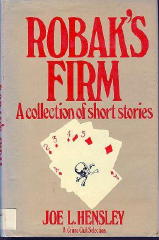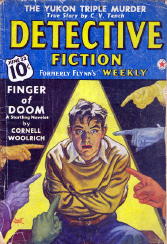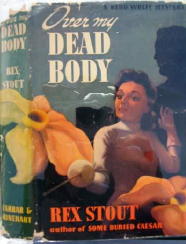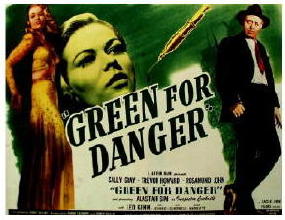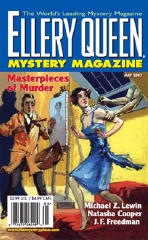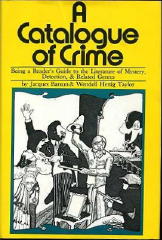Tue 27 May 2008
MIKE NEVINS on Aaron Marc Stein, Nicholas Blake, Walter Kilbourne & Sydney Pollack.
Posted by Steve under Authors , Characters , Columns , Crime Films[6] Comments
by Francis M. Nevins
There’s a general rule to which the most conspicuous exception in our genre is Agatha Christie: when an author dies, his work dies too. Certainly Aaron Marc Stein’s has. He was born in 1906, graduated summa cum laude from Princeton, wrote a couple of avant-garde novels which were published thanks to endorsements from Theodore Dreiser, then turned to mystery fiction under the pseudonym of George Bagby and, a few years later, under his own name too.
He quickly learned how to parlay his day jobs and other activities into backgrounds for the early Bagby novels, using his time as radio critic for a New York paper to create his own station in Murder on the Nose (1938), dipping into his memories of apparently liquor-soaked Princeton reunions for The Corpse with the Purple Thighs (1939), employing his stint at the madhouse known as Time magazine in Red Is for Killing (1941).
During World War II he abandoned fiction to serve as an Army cryptographer, but after the war he became a full-time author and wrote so prolifically and skillfully that in the early 1950s, when he was turning out four or more titles a year, New York Times mystery critic Anthony Boucher called him the most reliable professional detective novelist in the United States.
Between 1935 and his death half a century later he produced an astounding 110 book-length mysteries: 51 as Bagby chronicling the cases of the NYPD’s sore-footed Inspector Schmidt; 18 as Hampton Stone about New York Assistant District Attorneys Gibson and Mac; 18 under his own name with the archaeologist-detective duo of Tim Mulligan and Elsie Mae Hunt as protagonists and, when his publishers demanded stronger beer in their Steins, 23 with adventurous civil engineer Matt Erridge in the lead.
Factor in his one non-crime novel as Bagby plus one stand-alone crime novel under his own name and those two early literary experiments and you have a total of 114 books. He also wrote occasional short stories, which cry out to be collected. Most of his Bagby and Stone novels are set in and around New York, which Aaron knew and loved and characterized as vividly as any of his human beings, while most of his orthonymous books feature exotic locales in Central and South America or Europe.
I had been reading him since my teens but never got to spend quality time with him until the mid-1970s when we both joined the board of the University of California’s Mystery Library, and we remained friends for the rest of his life. In 1979 he received the Grand Master award from Mystery Writers of America. Later he and I served together on the board of Bantam s Collection of Mystery Classics.
His health was failing but he continued to turn out a book or two a year well into his seventies. Acclaimed by colleagues and connoisseurs, he never attained the popular success he so richly deserved. He died of cancer in 1985. That was almost a quarter century ago but I still remember him fondly.
Since the early 1960s he had lived in a co-op on Park Avenue and 88th Street with his sister Miriam-Ann Hagen (who also wrote a few whodunits of her own) and her husband Joe. They had bought it for $34,000 which they’d won gambling at Las Vegas in a single night. At the time of his death the unit was worth well over a million. In effect he had an apartment inside the apartment, and after he and Miriam had died Joe invited me to stay in Aaron’s quarters whenever I was in New York – which allowed me the unique experience of reading several of Aaron’s later novels in the room where he’d written them.
For most readers today his huge body of work remains an undiscovered treasure. Any who care to remedy that loss would do well to begin with his books from the years when he earned that accolade from Boucher: perhaps the Bagby titles Drop Dead (1949) and Dead Drunk (1953), or The Girl with the Hole in Her Head (1949) as by Stone, or Days of Misfortune (1949) under his own name. I still reread him regularly and with pleasure.
Of all the 20th-century poets who made significant contributions to the whodunit, our Poetry Corner guest this month is probably the most distinguished. Cecil Day-Lewis (1904-1972) is best known today as the father of actor Daniel Day-Lewis, but in his lifetime he served as England’s Poet Laureate and, as Nicholas Blake, the creator of amateur sleuth Nigel Strangeways, he was considered one of the finest crime novelists of his generation.
He combined both interests in the Strangeways novel Head of a Traveler (1949), which Thomas M. Leitch summarized superbly in his chapter on Blake for Volume One of Mystery and Suspense Writers: The Literature of Crime, Detection, and Espionage (1998). “The central figure is the distinguished poet Robert Seaton, whose household is destroyed by the unexpected discovery of his brother Oswald’s decapitated corpse….[T]he real interest of the novel is in its impassioned examination of the costs of poetry – the lengths to which poets and those who love them will go in pursuit of their craft.”
Anthony Boucher, reviewing the novel in his “Speaking of Crime” column (Ellery Queen’s Mystery Magazine, August 1949), suggested that “Blake knows so much about his theme, the nature of poetic creation, that he never quite conveys it convincingly to the reader.” But those with twin passions for poetry and mystery fiction may well find Head of a Traveler the single most rewarding whodunit they’ve ever read.
As one whose usual breakfast is fruit and a piece of whole-grain toast, I am avocado-green with envy at the morning meals characters like Nero Wolfe can tuck away. But Wolfe’s most lavish spread seems Spartan next to that of Walter Kilbourne, the cartoonish take on Sydney Greenstreet in Ross Macdonald’s second Lew Archer novel, The Drowning Pool (1950):
“He ate with a gobbling passion. A piece of ham and four eggs, six pieces of toast; a kidney and a pair of mountain trout; eight pancakes with eight small sausages; a quart of raspberries, a pint of cream, a quart of coffee. I watched him the way you watch the animals at the zoo, hoping he’d choke to death….”
What, no platter of cream-filled tortes for dessert?
Just as this column was about to sail off into cyberspace to its destination came the news that Sydney Pollack died of cancer on Memorial Day at age 73. He was a Hoosier, born in Lafayette, Indiana on July 1, 1934, and began his show-business career as an actor. In the early Sixties he moved into directing and helmed episodes of many network TV crime-suspense series including Cain’s Hundred, Target: The Corruptors, The Alfred Hitchcock Hour, The Defenders, The Fugitive.
His Hitchcock episode “The Black Curtain” (November 16, 1962) was nominally based on Cornell Woolrich’s 1941 noir novel of the same name but had almost nothing in common with the book except for the springboard situation as Frank Townsend (Richard Basehart) recovers from a second blow on the head and learns that for the past few years he’s been suffering from amnesia and leading another life.
Pollack’s most successful feature-length contributions to our genre were the cynical thrillers Three Days of the Condor (1975) and The Firm (1993), whose bad guys were respectively the CIA and the legal profession: not bad choices at all.
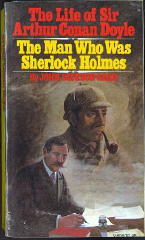
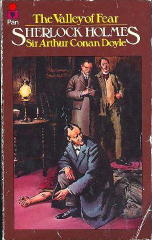
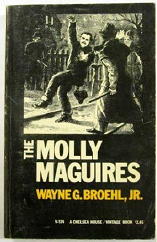
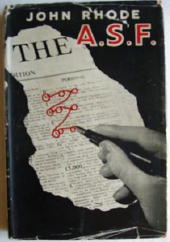
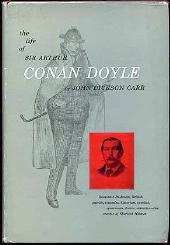
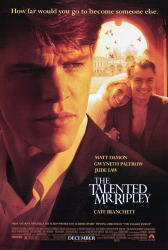
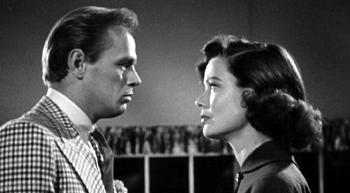

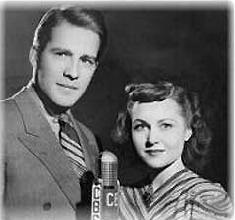
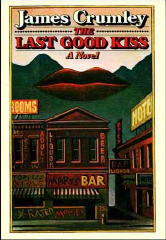
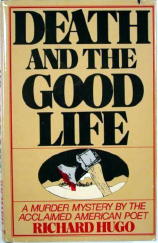
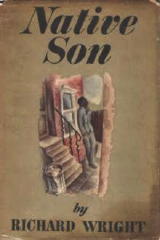
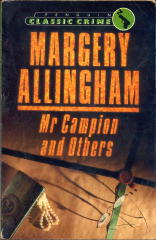
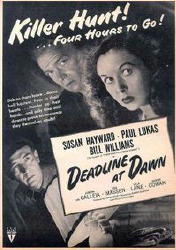

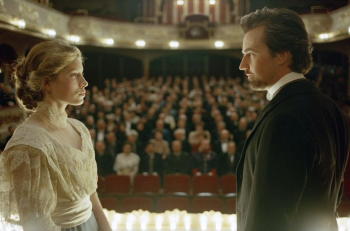
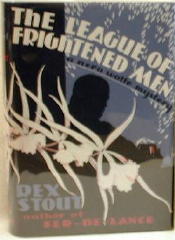
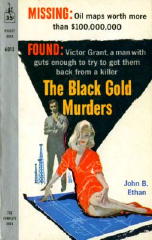


 How silent is the night — how clear and bright!
How silent is the night — how clear and bright! The year The Bride Wore Black first came out is commonly considered the year when film noir came into being. But the more movies I see from the years immediately preceding 1940, the more I tend to question that consensus. Turner Classic Movies recently and for the first time ran
The year The Bride Wore Black first came out is commonly considered the year when film noir came into being. But the more movies I see from the years immediately preceding 1940, the more I tend to question that consensus. Turner Classic Movies recently and for the first time ran  Devotees of films noir and their fictional sources will want to check out Kevin Johnson’s
Devotees of films noir and their fictional sources will want to check out Kevin Johnson’s  His fourth EQMM original, “Tyger! Tyger!” (October 1952), is perhaps the finest short crime story to deal centrally with poets and poetry. Malcolm Ridge, struggling to express his feelings about the Atomic Age, becomes prime suspect in the murder of the owner of a Russian restaurant in Greenwich Village and uses his skills as a poet not only to clear himself and identify the real killer but also to use the experience in conjuring up the exact words his poem-in-progress needed.
His fourth EQMM original, “Tyger! Tyger!” (October 1952), is perhaps the finest short crime story to deal centrally with poets and poetry. Malcolm Ridge, struggling to express his feelings about the Atomic Age, becomes prime suspect in the murder of the owner of a Russian restaurant in Greenwich Village and uses his skills as a poet not only to clear himself and identify the real killer but also to use the experience in conjuring up the exact words his poem-in-progress needed. 